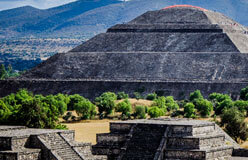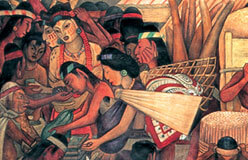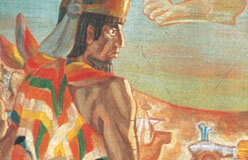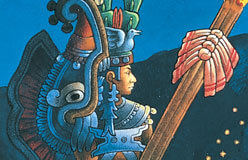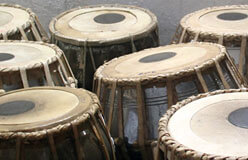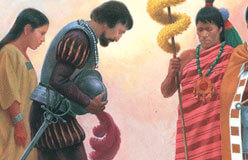The ruins of the greatest city of the Aztec empire, Tenochtitlan (ten-och-tee-TLAN), are buried under a subway system.
They’re right under modern-day Mexico City. The Aztecs picked the place for their new capital in 1325, after searching for years. Back then the land was in the middle of swampy, shallow Lake Texcoco. Two centuries later, that island was the center of an empire of over 5 million people. It covered most of central and southern Mexico. By the early 1500s, Tenochtitlan was one of the world’s biggest cities. More people lived there than in London or Paris back then. How did a huge empire start on an island in a lake? What were its people like? How long did it last? Why did it fall? Let’s look at the mysteries of the Aztecs.
